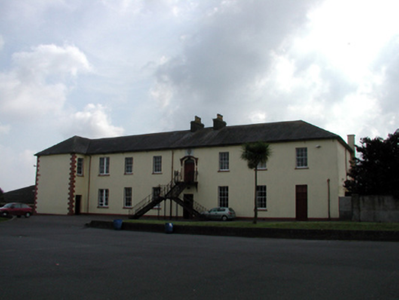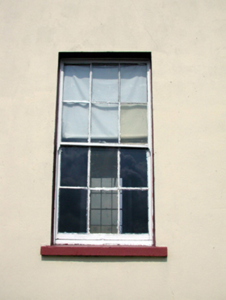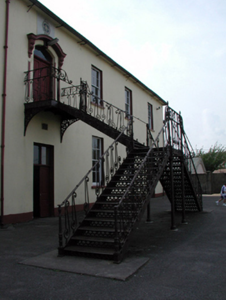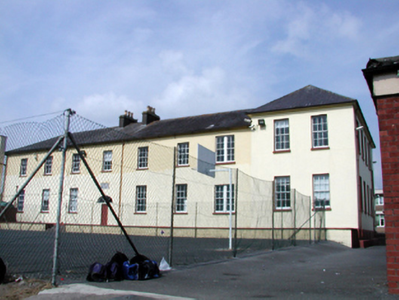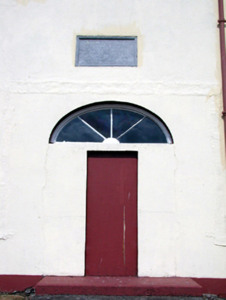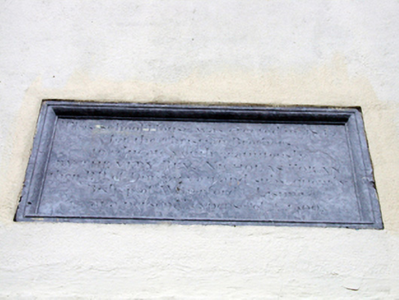Survey Data
Reg No
22821108
Rating
Regional
Categories of Special Interest
Architectural, Artistic, Social, Technical
Original Use
School
In Use As
School
Date
1835 - 1840
Coordinates
225865, 92846
Date Recorded
04/08/2003
Date Updated
--/--/--
Description
Detached eight-bay two-storey national school, dated 1836, on a shallow T-shaped plan retaining original fenestration with single-bay two-storey advanced end bay to left extending into shallow single-bay two-storey return to south-east. Hipped slate roof on a shallow T-shaped plan with clay ridge tiles, paired rendered chimney stacks, and cast-iron rainwater goods on rendered eaves having iron brackets. Painted rendered walls with cut-stone date stone/plaque to rear (south-west) elevation. Square-headed window openings (some in bipartite arrangement) with stone sills. 6/6 timber sash windows with 4/4 timber sash windows to bipartite openings. Segmental-headed door opening to first floor approached by flight of decorative cast-iron steps on a T-shaped plan having decorative brackets with rendered panelled surround having rendered segmental hood moulding on consoles, and timber panelled double doors with overlight. Square-headed door openings to remainder with timber panelled double doors, and overlights. Square-headed door opening to rear (south-west) elevation now blocked-up with segmental window opening over having spoked fanlight. Interior with timber staircase having decorative wrought iron balustrade. Set back from road in own grounds with tarmacadam grounds to site.
Appraisal
An attractive substantial school building of balanced proportions and reserved detailing, which has been very well maintained to retain its original form and fabric, both to the exterior and to the interior. Of particular interest is the decorative staircase to the primary entrance, which is the most notable concession to artistic design in the entire building, and which is of some technical interest also. The school is of additional significance in the locality for its historic associations with Nicholas Foran (n. d.), subsequently Bishop of Waterford and Lismore, as recounted in the cut-stone date stone/plaque.

